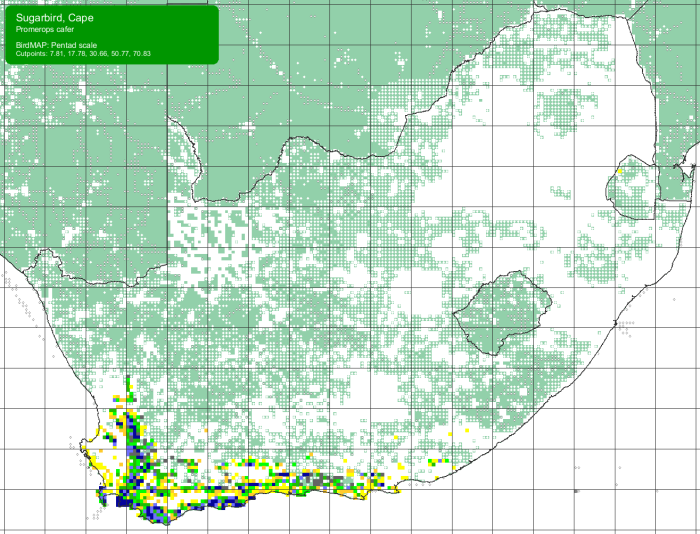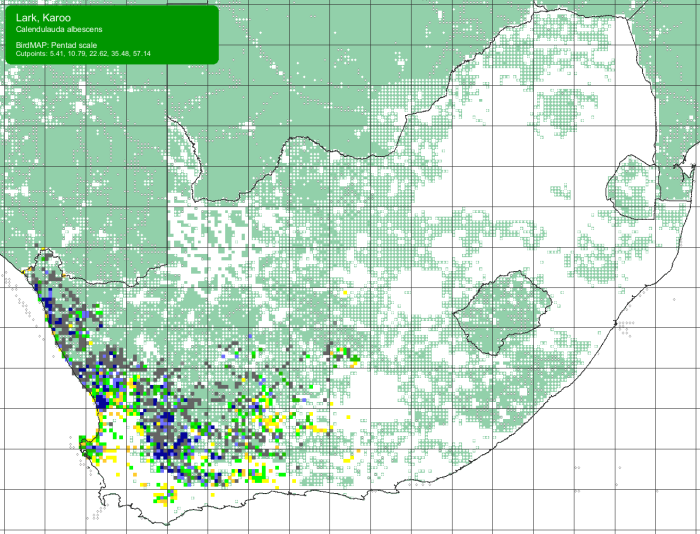A species is said to be endemic when its distribution is restricted to a defined area.
This area must be specified – the word endemic used on its own is meaningless, unless it is clear from the context!
Ultimately, all species are endemic to planet Earth! The term becomes most useful when the species is restricted to a relatively small area, such as a country or a biome. For example, the Cape Bulbul occurs only in South Africa, and the Cape Sugarbird occurs only in the Fynbos Biome. The Fynbos Biome is restricted to South Africa, so the Cape Sugarbird is endemic not only to the Fynbos Biome and but also to South Africa.

The use of the term endemic is not restricted to species. It can be used for subspecies, or for a genus, family, etc. For example, the order Coliiformes is endemic to Africa – this means that the six species of mousebirds only occur on the continent of Africa. Three of the six mousebirds (White-backed, Specked and Red-faced) occur in southern Africa. The only other bird order endemic to Africa is the Musophagiformes, which contains all the turacos (also know as the loeries).
The tern near-endemic has also been defined. It means that the range is almost restricted to a defined area. The distribution map below is for the Karoo Lark. It shows that this lark species can be thought of as a near-endemic to South Africa; a tiny bit of its range extends into southern Namibia. This will be seen more clearly in future, once more data have been collected by the bird atlas for the extreme southwest corner of Namibia.

In broad-brush terms, species which are endemic to a particular habitat type are of conservation concern because they restricted to that habitat. This information can form part of the motivation for protected areas within that habitat. Similarly, if a species is endemic to a particular political unit, such as a country, then responsibility for its conservation devolves to that political unit.
